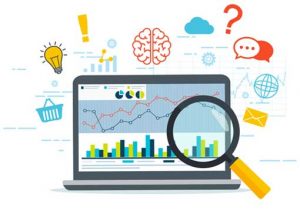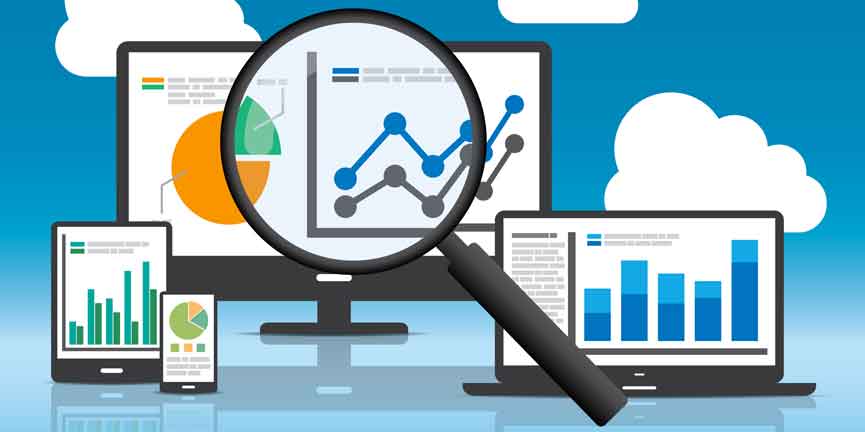Big data and analytics are hot topics of discussion in regards to the growth of today’s businesses because they are widely regarded as key enablers of digital transformation. But even though leveraging data and analytics is crucial for today’s tech-driven and fast-paced business environment, the reality is that many organizations still struggle to extract value from their data and also fail to unlock the opportunities that their collected data offers. Not only does this result in frustration, but it also hinders organizations from facilitating agile and effective business growth.
SAS, a trusted name in analytics, believes that in order for companies to use data to drive business strategy and performance, they need the right approach and the best solutions. SourceForge spoke with Fiona McNeill, the Global Product Marketing Manager at SAS, to understand the benefits and importance of analytics for today’s modern businesses, and also to explore how SAS is giving businesses the ‘power to know’ with their suite of analytics solutions and services.
Q: Can you please provide us with a brief company overview and the industries that your solutions are applicable to?
A: SAS was founded in 1976 to help customers in all industries use analytics to make better decisions. SAS is considered the leader in analytics and has customers in 148 countries at more than 83,000 sites. 94 of the top 100 companies on the 2016 Fortune Global 500 are SAS customers.

Fiona McNeill, the Global Product Marketing Manager at SAS
SAS is regularly recognized as a best place to work, with a focus on creating a positive work environment and empowering people to do their best. Our company has more than 14,000 employees worldwide, including more than 5,000 at the world headquarters in Cary, NC. We service a wide range of industries, including banking, communications, retail, government, health care and education.
Q: How have analytics solutions changed to help meet the increase in both the size and the type of data that is powering businesses?
A: Analytics solutions have developed to take advantage of new computer architectures to handle increases in the size and type of data. One example is parallel distributed in-memory processing to take advantage of elastically scalable compute power and help ensure results are fast. Entirely new methods have been developed for processing image data – machine learning methods that build and train models on the fly within fast moving, event stream data, for example. Analytics solutions are becoming ‘compute aware,’ utilizing CPUs or GPUs without having to rewrite code. And, these newer analytics solutions have become more accessible, beyond the data scientist, to help improve productivity and collaboration to drive better results.
Q: What are some of the most common business issues that you see in regards to analytics? And how can SAS help remedy these?
A: Organizations want to both expedite innovation while making sure there is governance around their data and analytics models and processes. Analytics practitioners need to be able to quickly and easily move their models from a sandbox and deploy them for production use. However, governance needs to be in place to secure and protect sensitive data and to trace the source of the decisions made from analytics.
SAS can help organizations with both. We offer a platform that enables analytics practitioners of any skill level to move from data to discovery to deployment using their choice of tools all in one unified platform. From data preparation, to interactive discovery and exploration, to model building and deployment – all aspects can be supported from a single, user-friendly and visual interface that complements and extends common open source interfaces and languages like Python and R.
Q: What do you believe are the most crucial functionalities or tools that an analytics solution needs to possess in order to be successful?
A: The most critical element is that analytics be adopted and used to solve business problems or deliver insights to advance an organization’s goals. Otherwise, analytics are no more than interesting experiments. Unless analytics can be swiftly deployed in a scalable, repeatable fashion with trusted results, the building of models, regardless of the tools used, is solely an academic exercise.
Q: Let’s take an in-depth look at SAS Viya, in addition to the problems it seeks to solve as well as the functionalities of the solution.
A: SAS Viya is popular because it enables everyone, including data scientists, business analysts, developers and executives alike to collaborate and realize results faster. Today’s organizations often struggle to keep pace with accelerating analytics demands and to deliver fast results.
SAS Viya offers elasticity, scalability and fault-tolerant processing. The benefits of these features are faster processing; a standardized code base that supports programming in SAS and other languages, like Python, R, Java and Lua; and support for cloud, on-site or hybrid environments. SAS Viya also increases collaboration across teams, as multiple users can explore and analyze the same data, making the data discovery and model-building process more collaborative.
Q: What makes SAS’s offerings unique in the analytics market?
A: At SAS, we’ve solely focused on solving business problems with analytics for more than four decades, and we continue to build that knowledge into our products and solutions. Recognizing the importance of driving tangible, measurable value from analytics is the key to ongoing adoption and use of our software. We look at analytics as a holistic lifecycle – one that encompasses data, discovery and deployment – ensuring that assets like data and code are portable across phases and the connections between these three phases are as seamless as possible. We deliver this not aimed at one type of user but to any user, with any analytics skill set, using a variety of tools and approaches. And, we can deliver it at scale by managing millions of these assets for our customers simultaneously.
Q: How can SAS help support OSS, and vice versa?
A: In the building of our software, we use open source technologies – so we understand the benefits of doing so. Not only do we adopt open industry standards like Ansible and YUM as part of the SAS Viya product installation, but we also contribute back to open source projects, like Jenkins and Python. We know that great analytics can come from anywhere, so we integrate with open data standards, open data-driven visual objects, like D3, open source coding languages, like Spark, Kafka, Python and R, RESTful services, and more. We allow users who know how to code in Python, R, and Java to code and run the same actions in our platform that SAS programmers and SAS user interfaces do using direct languages interfaces. We also help unify analytics silos made up of assets created using open source tools within an ecosystem so that IT can more easily govern, administer and deploy analytics as scalable assets, in model inventory management and automated decisioning.
Q: Machine learning and AI are steadily gaining popularity in every aspect of business communications. How do you believe that these will affect analytics?
A: AI brings with it a promise of genuine human-to-machine interaction. When machines become intelligent, they can understand requests, connect data points and draw conclusions. Every industry has a high demand for AI capabilities – especially question-answering systems that can be used for legal assistance, patent searches, risk notification and medical research.
As machine learning technology advances, we expect it to continue to affect analytics in a number of ways. Three examples include:
- Graph analysis, which is the process of discovering patterns in these networks. Some of these patterns can be helpful in running a business or improving a process, and some patterns can even detect crimes or other preventable behaviors.
- Geospatial analysis, which enables the addition of new dimensions to analytics with contextual information and locational data.
- Natural language generation, which has become commonplace through virtual assistants on our phones and in our homes, that can interpret our voice commands and reply in the same language. As data volumes continue to grow, and personal assistants become the norm, technologies that can help us interact naturally with data will become even more popular.
Q: Where do you see the analytics market headed in the not-to-distant future? What customer desires or market trends will shape the analytics industry? And how is SAS preparing for these changes?
A: The fluidity of analytics will increase, being embedded and permeating wherever there is data – and necessarily based on AI and ML methods. Automation is key to responsiveness of organizations to their customers, as is traceability and the ability to prove analytics action derivation in a court of law. There has never been just one method that provides the ultimate answer – it’s a range of methods best suited to the data and task at hand – and that’s something we don’t expect to change.
SAS is arming organizations with broad and deep analytics intelligence, from whatever code base they prefer or change to over time. This intelligence is based in a platform that addresses data security, traceability and governance of both analytics and actions taken from them. The combination of flexibility and accountability is what we feel a lot of our customers are looking for with their analytics solutions.
About SAS Institute
Based in Cary, North Carolina, SAS Institute is the leader in analytics software and services. SAS develops and markets a suite of analytics software, which helps organizations access, manage, analyze, and report on data for better, more informed decision-making. SAS has customers in 148 countries and serves 94 of the top 100 companies on the 2016 Fortune Global 500.
